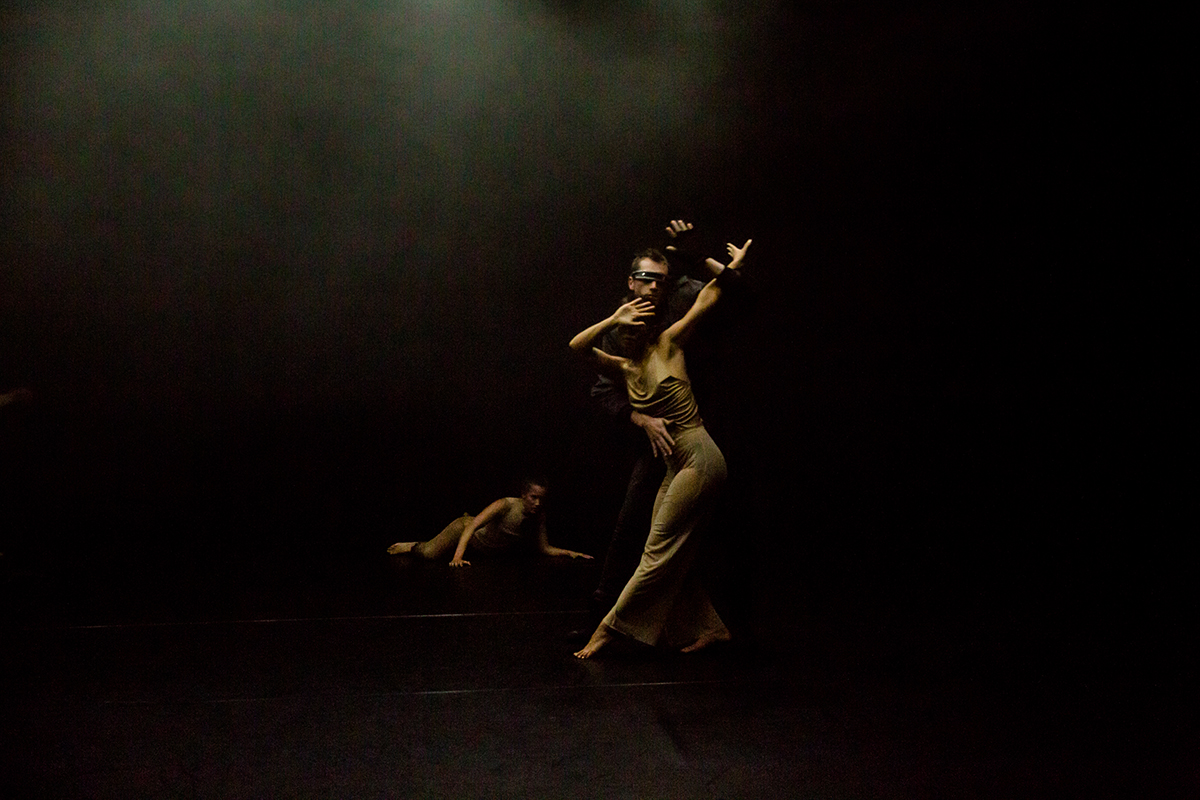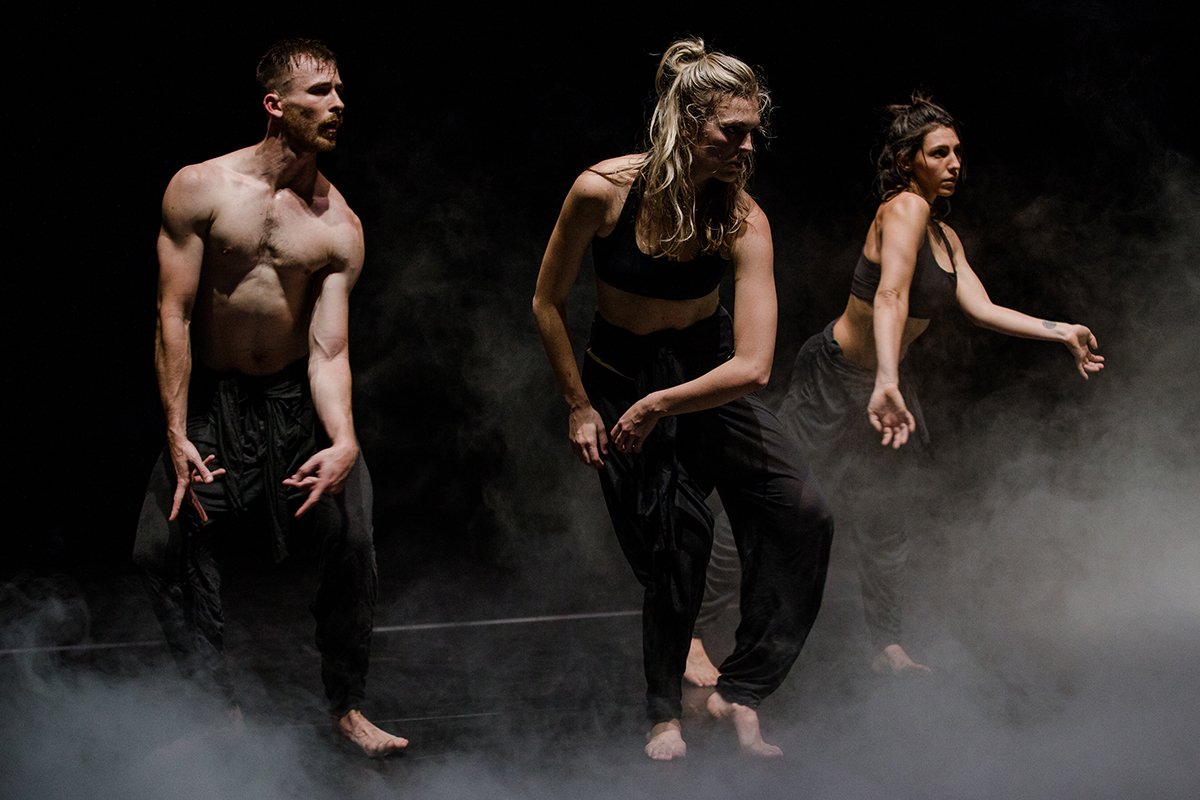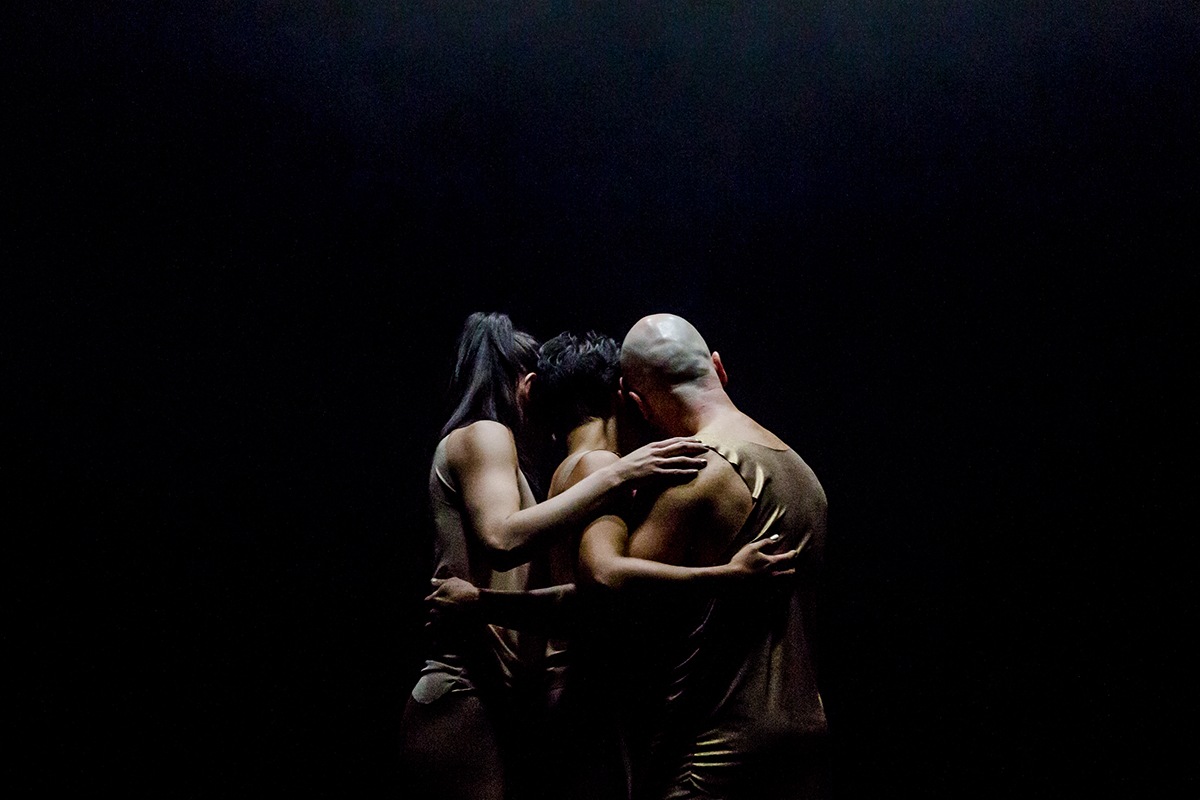
Stephanie Lake and Melanie Lane: The shared energy of the dancefloor
Though human history is far too chaotic to move in predictable cycles, there’s a poetry to the notion that dance history has something of that rhythmic flow to it. In Melbourne, at least, the period of 1995 to 2005 saw a flurry of activity as new companies formed — the likes of Chunky Move, Lucy Guerin Inc and Phillip Adams BalletLab — whose influence is still obvious today. Then came a time when dance activity was no less energetic, but the stable of companies mostly remained the same. Who would fill the generational gap? A pair of recent works at Arts House delivered an encouraging reply.
Both Stephanie Lake’s Pile of Bones and Melanie Lane’s Nightdance are clearly made by choreographers young enough to have spent more than a few nights at clubs, dance parties and outdoor festivals. The ecstatic, spontaneous rituals of these experiences are baked into the choreography, and this is one of the notable features that seems to be cropping up in work by dancemakers their age and younger. It’s a generous act, looking to harness the energy of a shared dancefloor, and a world away from the cerebral spikiness of purely form-based dance.

Jack Ziesing, Samantha Hines, Marlo Benjamin, Pile of Bones, Stephanie Lake Company, photo Bryony Jackson
Stephanie Lake, Pile of Bones
Lake’s choreography in particular has long been inflected with emotional expressiveness detached from narrative. Pile of Bones furthers this by producing a set of evolving relationships that a viewer can supply their own meaning to, whether through imagination or experience. A powerful opening sees its four dancers as one organism, emerging into narrow light like something ejected from primordial darkness. As the forms split, their physical complexity multiplies too, though they’re still a long way from the human — think a Francis Bacon painting without the ick factor.
Whether animal, vegetable or even molecule, these figures develop in an evolutionary rush, and soon enough the universe has expanded to the point that they can become small, more still, under the majesty of the night sky in the Australian bush — though, again, this is one viewer projecting onto the sound and movement that composer Robin Fox and Lake have built. The next person along might read something entirely different into the stage pictures this work strives towards. They might not read anything, which is always the danger of choreography that seems so pregnant with meaning but never gets literal about it. However, there’s no doubting Lake’s ability to produce both robust and thoughtful dance.

Melanie Lane, Lillian Steiner, Gregory Lorenzutti, Night Dance, Melanie Lane, photo Bryony Jackson
Melanie Lane, Nightdance
Melanie Lane’s Nightdance is even more fearless in its personal vision. There was a moment late in the piece when I was forced to put my note-taking aside and just accept that I had no frame of reference for what I was seeing. You’ll know it if you were there. It’s a work that shouldn’t be spoiled, but that doesn’t prevent discussion — there are no twists, as such, but it’s an hour of frequent surprises.
An extended, hypnotic opening sequence sees three dancers undulating in an ochre haze, the animal eroticism to their movements balanced by the technical precision with which they’re performed. The trio almost never uncouple their gaze from the audience, lending a presentational aspect that’s part sex show and part mating display, and the libidinally-charged set-piece establishes the tone for what will follow.
Nightdance isn’t about sex, exactly, but its evocation of nocturnal life — from the bed to the dancefloor — necessarily yokes sexuality to its performance. To a driving beat a succession of memorable figures emerges on stage, transforming the space as they do so: now a drag club, now a fetish den, now a rave. There’s a polymorphous perversity to it, not merely in the free-floating desire that hovers over everything but in the instability of the visual image itself. At one point a figure is so bedecked with sequins that they almost appear to be composed of digital pixels, while another sequence features a dancer I didn’t even realise was there for a long time.
I’m still trying to make more sense of the finished work, but this is Lane’s triumph — Nightdance is filled with secret dramas and impenetrable mysteries the way that any dancefloor is, and it’s stitched together with the tight but invisible logic of a dream. And like a dream, when you’re in it you don’t question why this carefully but inexplicably costumed character appears at one point, because there’s an emotional sense to it that’s beyond waking thought. That Melanie Lane successfully puts her audience in that state is a rare triumph, and one that won’t be forgotten.
–
Pile of Bones, choreographer, director Stephanie Lake, performers Marlo Benjamin, Samantha Hines, Harrison Ritchie-Jones, Jack Ziesing, composer Robin Fox, lighting design Matthew Adey, costume design Harriet Oxley; Arts House, 15-19 Aug; Nightdance, choreographer, director Melanie Lane, co-creators, performers Lilian Steiner, Gregory Lorenzutti, Melanie Lane, sound design, composer Chris Clark, lighting design Ben ‘Bosco’ Shaw, costume design Ryan Ritchie, Benjamin Hancock, Sidney Saayman; Arts House, North Melbourne, 24-27 Aug
Top image credit: Melanie Lane, Sidney Saayman, Lillian Steiner, Night Dance, Melanie Lane, photo Bryony Jackson






